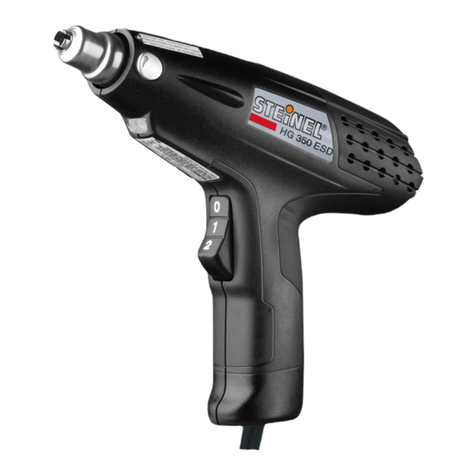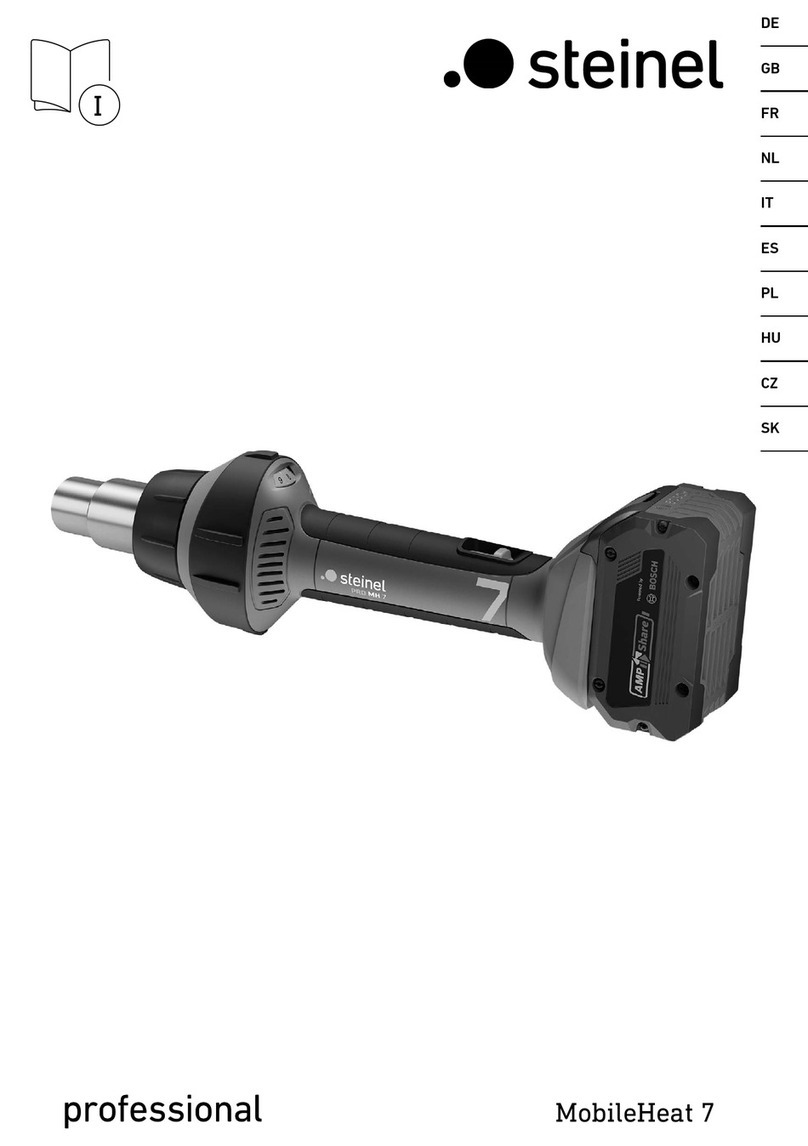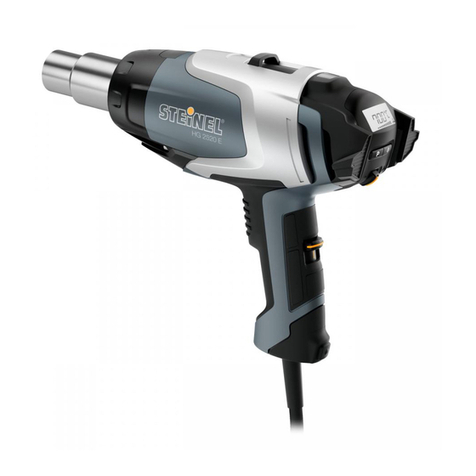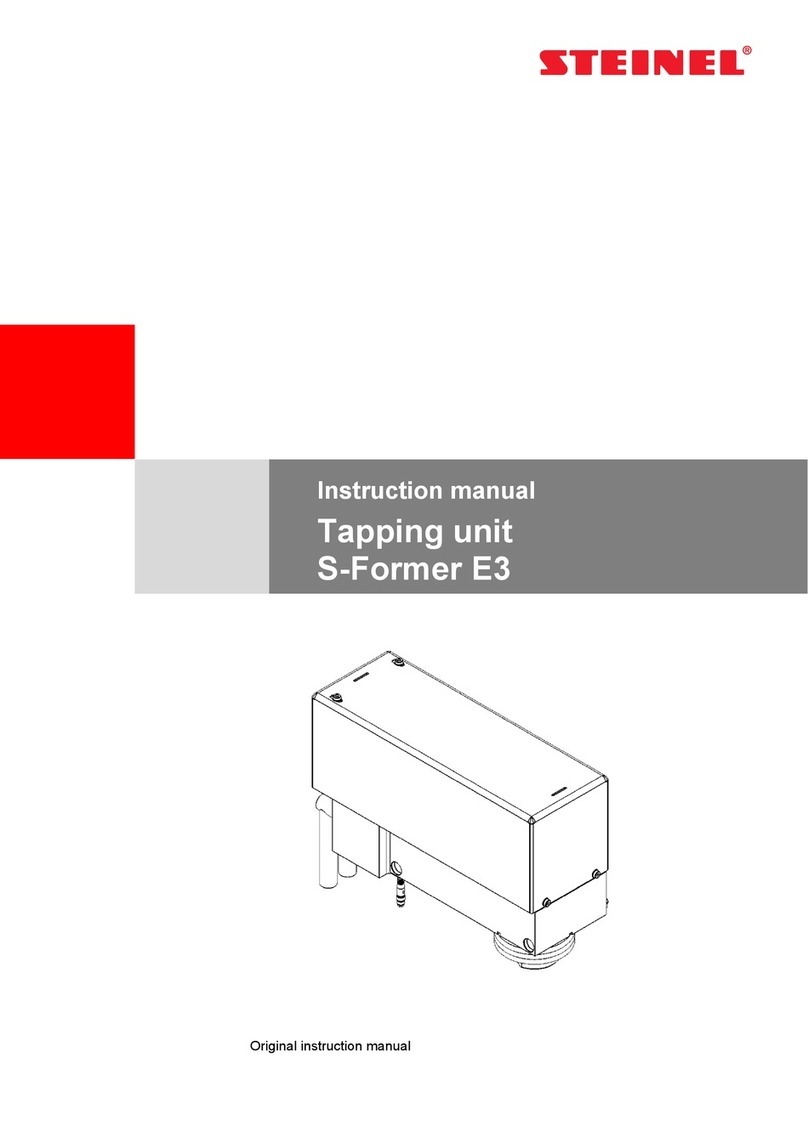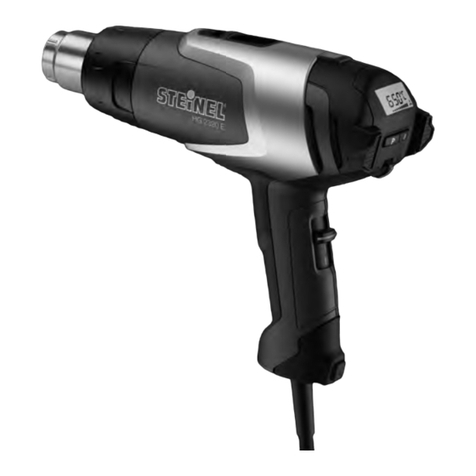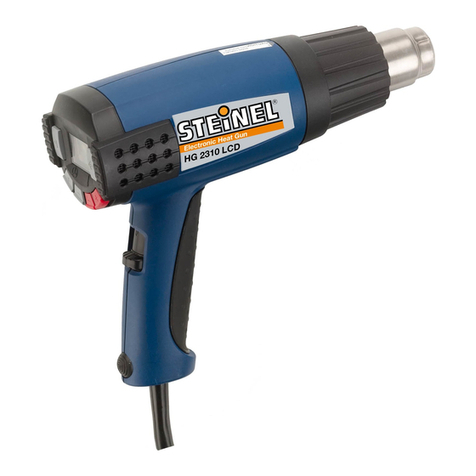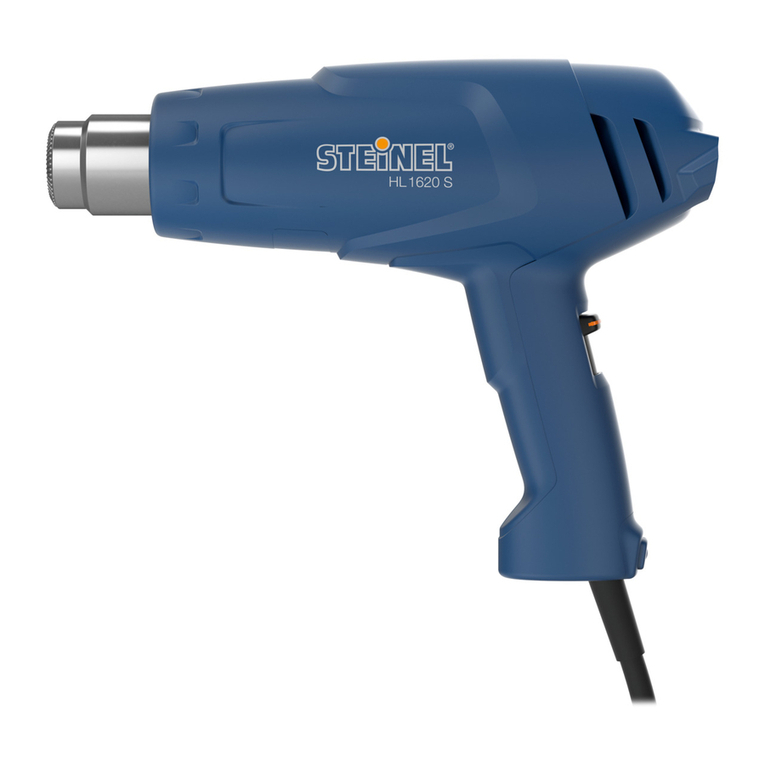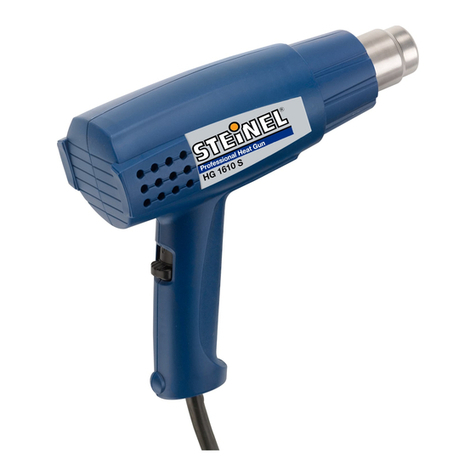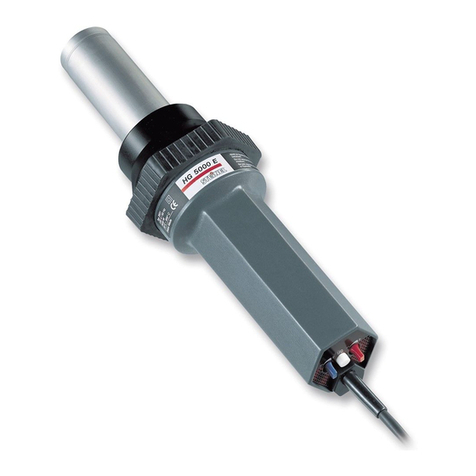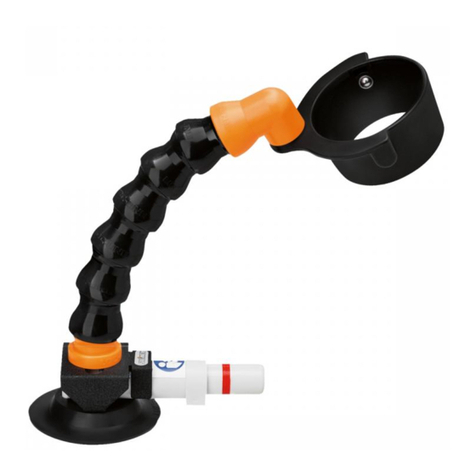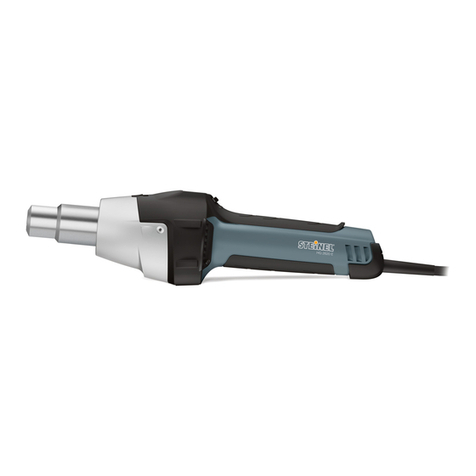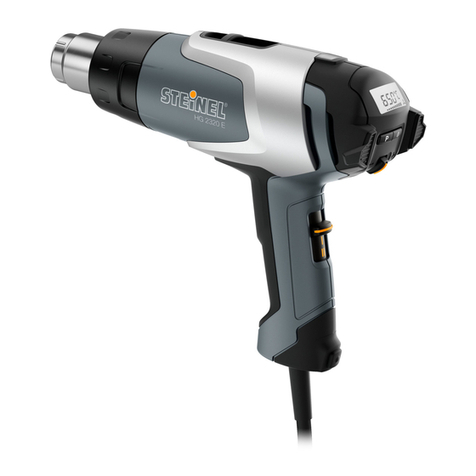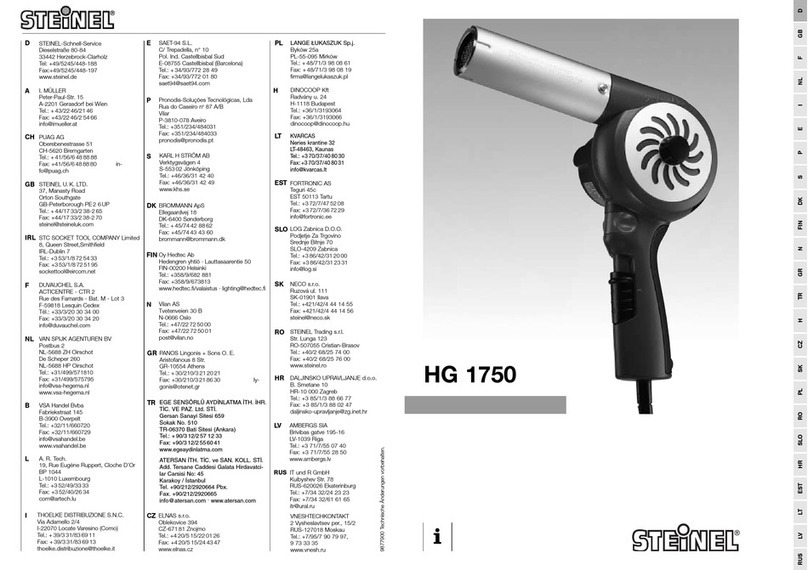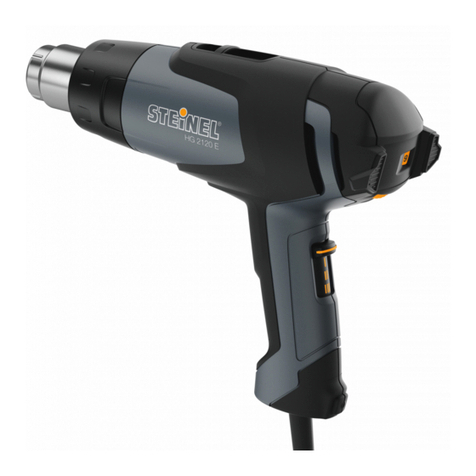Soldering
n
Soldering with
tinman’s
solder (60% Sn/40
O/O
Pb),
and special silver solder
with a melting point of
400°C:
e.g. copper water
pipes, or frames for lamp
shades.
I
De-soldering integrated
circuits and other compo-
nents.
n
Releasing other soldered
joints.
n
Soldering cable lugs.
Shapinq
n
n
n
Shrink-fitting
I
Shrinking on shrink-fit
sleeves for wiring.
t&s, batteries,
&d
lamp-
n
Shrinking on shrink-fit PVC
wire terminals.
tubing.
n
Shrink-wrapping packages
and postal parcels.
n
Shrink-wrapping flower
stalks (Transvaal daisy).
n
Shrink-fitting and solde-
ring in one operation with
plastic soldering sleeves.
n
Shrinking shrink-fit sleeves
onto tool handles, clothes-
line posts and handles.
n
Shrink-wraooina
capaci-
Shaping
PVC and polysty-
Shaping acrylic glass,
rene items at approx. 300%.
such as Plexiglas, at ca.
500°C;
to make Plexiglas
tables, lampshades, or dis-
play stands, for example.
Shaping heat-resistant
and polyurethane pipes or
rods.
Shaping wood; soak wood,
form to shape, and then
dry with hot air.
Thawing
n
Thawing out pipes and en-
gines.
n
Thawing out refrigerators
and freezers (do not heat
the plastic walls, because
this may deform them).
n
Thawing ice-coated stairs.
n
Thawing out automobile
doors and locks.
Paint
stripping
n
Removes
coats
of paint of
all kinds, even thick oil
paints and varnish, from
furniture, panelling,
half-
timbering, gutters and win-
dows. Heat paint with hot
air until blisters form, then
strip with a paint spatula or
scraper, or a wire brush.
When working on windows,
protect the panes from
overheating (e.g. with a
strip of sheet metal).
Remove plastic roughcast
with hot air and a spatula.
n
Dnrins
n
n
n
c
n
n
bfout
freshly applied kni-
fing filler or adhesive
quickly.
Drying samples of paint.
Drying building joints be-
fore spraying insulation or
sealant.
Drying pointed tiling.
Drying joints and cracks in
boatbuilding.
Drying polyester putty.
Welding and sealing
n
n
n
n
Welding plastic parts with
welding strip to cars, the
bottoms of skis, plastic
boats, surfboards etc.
Lap welding PVC fabrics,
sheeting and foil with hot
air and a pressing roller.
Welding PVC household ar-
ticles and joints of PVC
coatings with welding strip.
Welding asphalt roofing felt
and melting lumps of as-
phalt to repair roofing.
Disinfectins
n
n
n
Rabbit hutches, dovecotes
etc. can be cleared of bac-
teria and insect pests
quickly with hot air.
Ant colonies can be com-
batted effectively with
500°C hot air.
Eliminating woodworm and
boring beetles, be careful
not to heat the surface of
the wood too strongly.
Hardening or softening
adhesives
n
Gluing large areas with
n
n
n
n
n
n
n
conta%t
adhesives, by hea-
ting and thus extending the
setting time.
Activating bonding emulsi-
ons.
Accelerating gluing work
by shortening the setting
time of two-component ad-
hesives.
Releasing screw fasteners
glued fast.
Removing PVC stickers, from
motor vehicles, for example.
Releasing fitted carpetting
and PVC flooring.
Removing veneers.
Fastening or removing
edge bands.
Preheating
n
n
n
n
Preheat?ng
small metal
parts (e.g. bearing, gud-
geon pins) to secure or
release a shrinkage fit.
Preheating cold engines.
Heating oil or grease to
simplify filling into gearbo-
xes etc.
Heating engine parts to
make oil or grease for
easier and more complete
drainage.
Other uses
n
n
n
n
l
Removing automobile
undersealing.
Staining wood with thermal
stain and hot air.
Easy application with hot
air of automobile putty in
rod form.
Releasing overtight scre-
wed joints by heating the
metal.
Removing wallpaper (moi-
sten pieces that will not
come off, and use hot air to
loosen them).
n
n
n
n
Repairing enamelwork and
enamelling jewellery.
Killing weeds in the gaps
between stone flags.
Cleaning paint from tools.
Cleaning grinder wheels.
n
Cleaning and dusting, using
the
50°C
cool-air setting.
